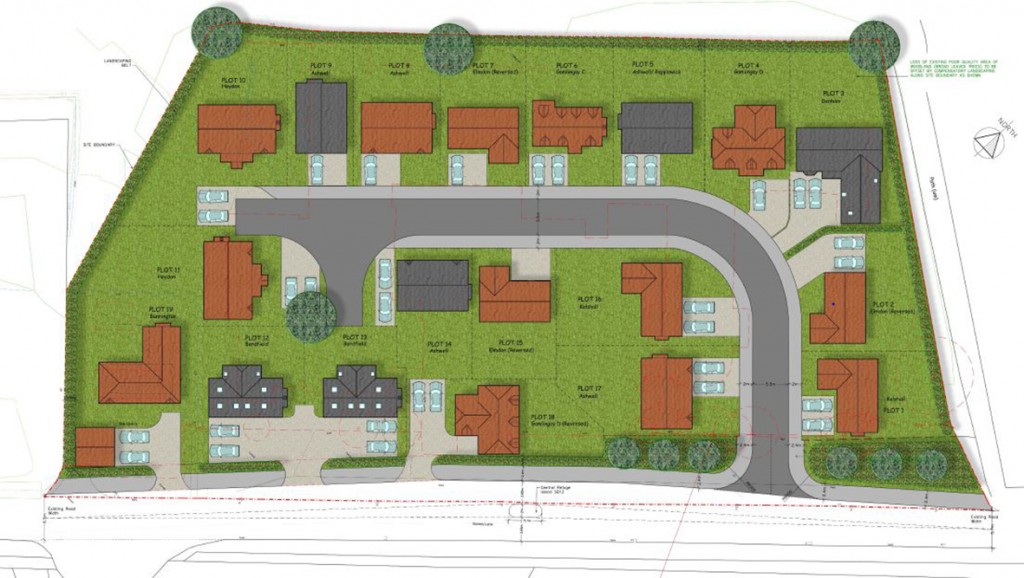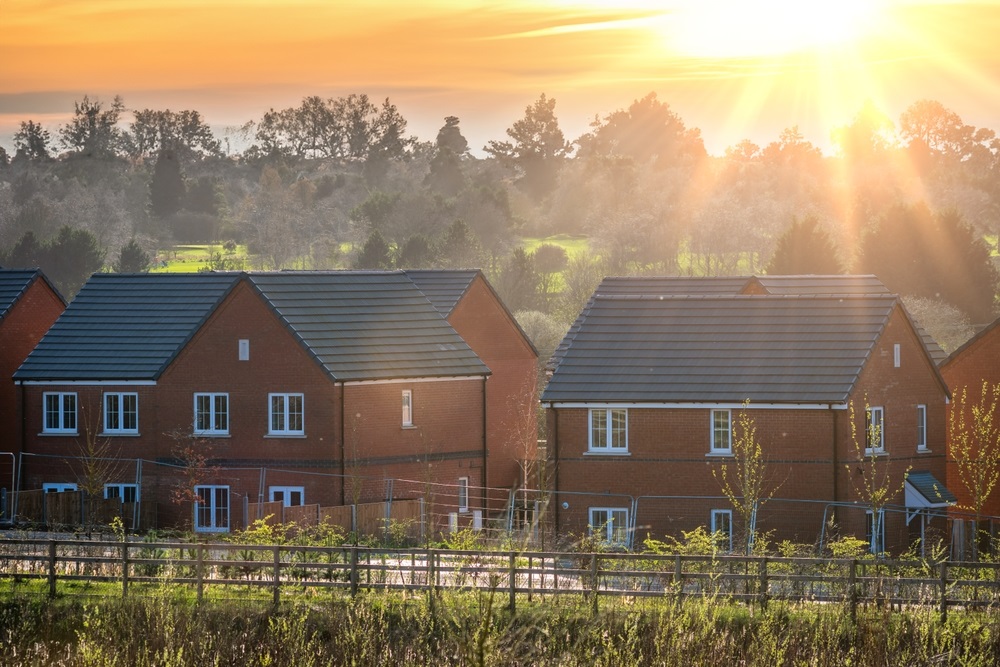Just over 10,000 people found a plot to build their own home in 2014. Property expert Michael Holmes talks to Joanne Atkin about the pros and cons of creating your very own, personal and unique living space. [box style=”0″] About Michael Holmes Michael Holmes is a residential property expert and an experienced journalist and broadcaster. […]
Just over 10,000 people found a plot to build their own home in 2014. Property expert Michael Holmes talks to Joanne Atkin about the pros and cons of creating your very own, personal and unique living space.
[box style=”0″]
About Michael Holmes
 Michael Holmes is a residential property expert and an experienced journalist and broadcaster.
Michael Holmes is a residential property expert and an experienced journalist and broadcaster.
He is chair of the National Custom & Self Build Association and spokesperson for The National Homebuilding & Renovating Show taking place at the Birmingham NEC from 26-29 March 2015 www.homebuildingshow.co.uk.
You may recognise Michael as he has presented property shows on television, as well as writing for the national press and publishing a best-selling guide to home improvement.
Michael has worked on development projects ranging from extensions and renovations, barn and pub conversions, to building new country houses. He has self-built twice and is currently undertaking his third major home renovation project.
[/box]
What is the difference between self-build and custom build? Self-build is the DIY form of custom build, according to government definition. In reality they are much the same. Full custom build is effectively buying an individually designed home off plan – choose your plot, design your home or pick a design, pay a deposit and collect the keys a few months or possibly just weeks later – no risk and no hassle.
Self-builders are effectively DIY developers taking on the ‘development risk’ themselves but saving 20-30 per cent of the end market value in return. Custom builders trade away risk for a lower saving.
What are the advantages to building your own home? The biggest attraction cited by self-builders and custom builders is always choice – choice of design and choice of specification. People want to make their home individual and to design it themselves – the layout, the kitchen and bathrooms, storage, etc. Volume housing has to be homogenous but some people want individuality and that is what self-build and custom build offer. For those willing to take on some of the development risk – planning, funding, management, etc, there can also be big cost savings of 15-20 per cent. Those with DIY skills can reduce the cost even further by saving on labour costs, some saving up to 50 per cent.
Some local authorities and or housing associations offer lower cost plots, or shared ownership plots so self-build can be a very affordable option.
What are the disadvantages to building your own home? With custom build there is the same risk as buying a house off plan, so you need to ensure your deposit is protected through an insurer or warranty provider. If you are having a house built without a fixed price contract then keeping control of the budget is a risk – most costs are predictable, but ground conditions can change the cost of foundations and utility connections.
Generally the more risk you take on – for instance buying a potential plot with no planning – the more you could gain or lose. Unlike buying a volume built house, or an existing property, you have to wait months, or least several weeks for the keys.
What tax incentives are there to building your own home? Self-build and custom build are zero rated for VAT – as are all new dwellings. There is no capital gains tax on selling your main home – so even if you save 15-20 per cent on the end value, there is no tax when you come to sell.
There is also an exception from town hall taxes like Community Infrastruture Levy (CIL) and s106 planning obligations (in England) where larger developers have to pay towards providing infrastructure and affordable housing.
How much cheaper is it to build your own home? Custom builders may save 0-10 per cent but it depends on their chosen specification. Self-builders can save 15-20 per cent on average. DIY self-builders can save up to 50 per cent.
How do you go about finding land to build on? Estate agents remain the main way to find a plot – but there are also many specialist routes, like surveyors, auction houses and private sales. The best way to find out what’s available is via sites like plotfinder.net which collects all the data and private sales. It is a paid for subscription service but does all the legwork for you.
When you buy a plot of land, does it come with planning permission? A custom build site will always have planning permission – sometimes for a Design Code which allows a range of choice within certain parameters and using a set palette of materials.
Self-builders often arrange planning themselves for their design – or use consultants, but you should always make sure planning will be forthcoming before buying land. Buying land without any planning permission is speculation and high risk – and to be left to professional developers.
Who do you need to employ – e.g. architect, surveyor, builders, plumbers? Legally there is almost nothing you can’t do yourself except any work involving gas connections or appliances, or connecting to the main electricity supply. Everything else from design to building, providing you follow the law and building regulations you can do yourself – even electrics and plumbing.
In reality, most people use an architectural design, structural engineer, and either a main contractor, or manage a team of sub-contractors themselves, with or without some DIY. Only around 10 per cent of self-builds are true self-builds with a very high proportion of DIY.
What about financing a self-build, how much of a deposit do you need? Is the money from a lender always released in stages? Self-build mortgages are released in stages, starting with land and then the rest in three or four lump sums as the house is built. Loans on land are typically 70-80 per cent loan-to-value, meaning you need a 20-30 per cent deposit, but some schemes such as those via BuildStore offer up to 95 per cent.
On average a self-builder needs access to funds totalling around 20 per cent of the total cost of land and build to be able to finance a project.
A recent Ipsos Mori survey suggested a million people intend to actively research the idea of self-build over the next 12 months. That does not equate to all of them doing anything about it but in reality what is the demand for self-build? Homebuilding & Renovating believes that the natural level of demand for self-build and custom build (having an individual home built to order on a serviced plot) is around 40 per cent of all new homes. This is based on the average level of demand across Western Europe where it is a mainstream housing choice. Most authorities agree that the UK needs to build 250,000 to 300,000 new homes a year, so that would indicate around 100,000 self and custom build homes – around ten times current levels.
[box style=”0″]
Case study – French Fields in Cheshire

Planning permission has been granted on a two-acre site in Cheshire that will transform a derelict rural industrial site into 18 custom build plots.
Brought to fruition by developer Mark Ward in association with custom build specialists BuildStore and Potton Homes, this landmark decision signals the end of a detailed planning application process – and presents custom build as a viable self-build option for those wishing to create the home of their dreams.
Located in the Bold Forest Park, near Warrington and St Helens, and in a designated greenbelt area, the site has 18 freehold plots of variable sizes, enabling either a well-proportioned four or five-bedroom detached home to be built. Due to the flexibility of custom build, the shape, size, design or style of home will not be restricted – so if a double garage, home cinema or games room is desired then it can be accommodated into the plot dimensions and design process.
With over half of plots already reserved, site clearance and the installation of roads and services will start during March 2015 with foundations being prepared for the first plot at the end April.
Six plots are ‘design-ready’ and the first phase of the build will start over the summer, with anticipated first completions in less than 12 months.
Unlike self-build where responsibility for securing land, obtaining permissions and establishing groundworks lies with the individual self-builder, this custom build proposition delivers fully serviced plots, ready to build on, with access and services in place.
Raymond Connor, chief executive of BuildStore, said: “We are delighted that permission has been granted to proceed with this innovative custom build opportunity. Key to delivering this proposition was reliable, local information on the demand for custom build. Through dedicated consultation events and utilising BuildStore’s Custom Build Register, we were in a position to accurately gauge interest and work with the developer to present French Fields. We look forward to working with custom builders to make French Fields a unique and outstanding custom build site.”
Mark Ward, developer, commented: “We are proving it’s a success already – we have committed interest from all walks of life – right from first-time buyers to retiring couples. We are also particularly mindful that the greenbelt nature of this site means that the character is more suited to a lower density of development – compared to commercial developments which would have a minimum 30/average 40 homes on similar site dimensions.“With the additional support of government funding, which recognises the importance of custom build in the UK, derelict land is developed, more affordable homes will be built, local trades will benefit and the dream of owning a home designed for yourself becomes a genuine reality.”
[/box]















